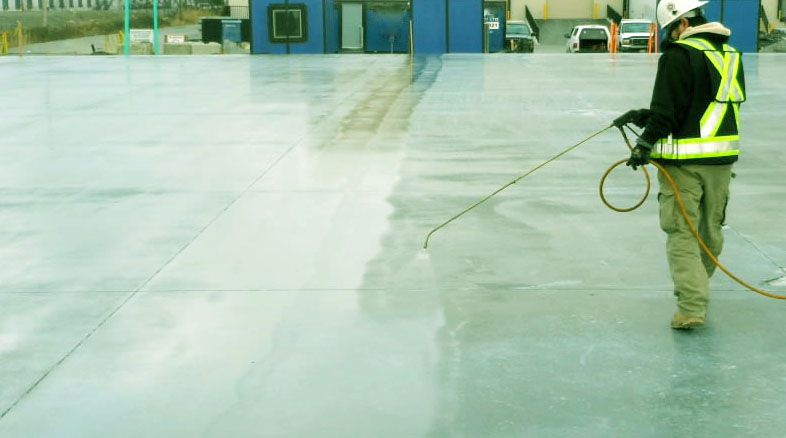Concrete Pouring in Hot Weather
Hot weather conditions for concrete pouring are defined when the average air temperature exceeds +30°C (86°F) for three consecutive days.
High temperatures accelerate the hydration process, increase slump loss, raise the need for mixing water, and lead to reduced strength and durability. Additionally, increased evaporation can cause significant volume changes. Therefore, proper precautions must be taken to mitigate these adverse effects.
Extremely hot, dry, and windy conditions can lead to very negative outcomes for concrete if no measures are implemented. Sudden and high evaporation in such environments causes shrinkage and cracking on the surface.
The evaporation rate of water due to surface bleeding on the concrete can be estimated using an evaporation chart. If the amount of water evaporating from 1 m² of surface area exceeds 0.500 kg per hour, the likelihood of surface cracking becomes high, and special protection measures must be applied.

Precautions to Be Taken When Pouring Concrete in Hot Weather
Cements with low heat of hydration should be preferred, and early-setting cements should be avoided. Cement dosage should be kept to the minimum possible level.
Aggregates should be protected from direct sunlight as much as possible to prevent excessive heating. Cooling can also be achieved by moistening the aggregates.
Since the mixing water has the greatest effect on the temperature of fresh concrete, it should be cooled before use, and precautions should be taken to prevent it from heating due to ambient temperature.
Chemical admixtures such as set retarders and water-reducing (plasticizing) agents can be used.
Fresh concrete should be placed, compacted, and screeded as quickly as possible.
If possible, pouring should be carried out during the cooler parts of the day, preferably at night.
Before pouring, the formwork and surrounding area should be thoroughly moistened to reduce the temperature and increase humidity in the area.
After the initial screeding, a second screeding should be performed when stepping on the surface of the concrete leaves a 1–2 mm deep footprint.
Immediately after the second screeding, water curing should begin. All surfaces must be kept continuously moist with ample water for at least 3 days. Curing should continue for a minimum of 14 days without allowing the surfaces to dry.
The temperature of the curing water should not be significantly lower than the temperature of the concrete, especially during the setting and early hardening stages; it should be as close as possible.
While curing is being applied to exposed surfaces, formwork-covered surfaces should not be neglected; formwork should also be kept moist.
To prevent evaporation and moisture loss, surfaces should be covered with impermeable sheets, plastic covers, or wet burlap, and concrete must be protected from direct sunlight and wind. Burlap in particular should be kept continuously moist.
Windbreaks should be installed to protect the concrete from wind exposure.